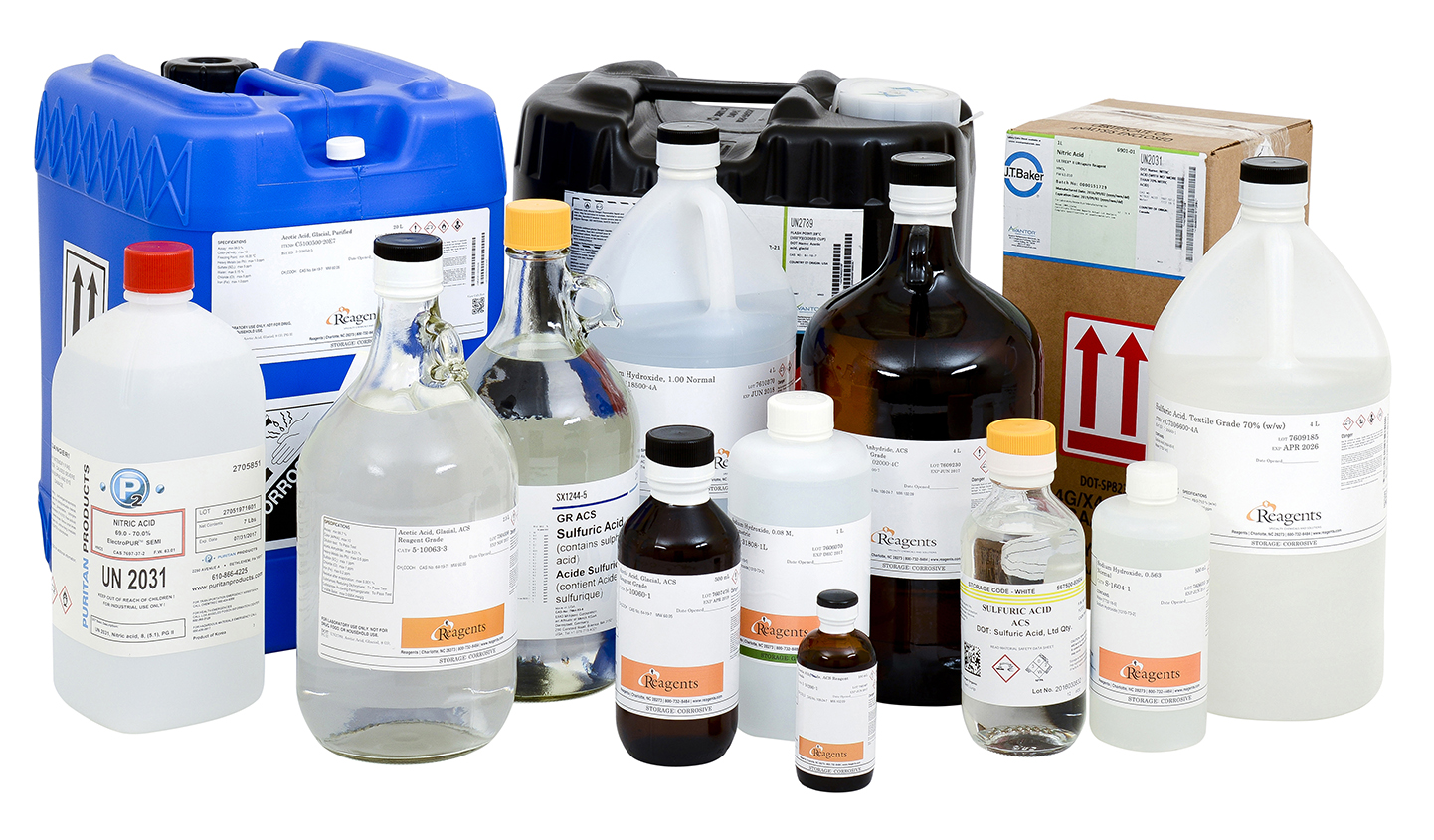
Laboratory Chemical Reagents in Pakistan.
Your partner for laboratory Reagents and Chemicals in Pakistan, We offer a full range of Solutions, Stain, Cultural Media, Biochemicals, Inorganic and organic fine chemicals.

Laboratory Chemical reagents
Chemicals and reagents play a critical role in the manufacturing and testing of pharmaceutical products, medical devices, biologics, cell- and tissue-based products, and many other healthcare-related solutions. Laboratories and researchers who use chemicals and reagents trust that their manufacturers have properly identified the grades of each chemical and ensured that the chemicals have met all regulatory and compliance standards for their intended use. It is imperative that everyone in the custody supply chain know and understand the different grades of chemicals and their uses, which are explained in this article.
What degree of chemical purity is needed based on the intended use? The following list describes the seven most common grades for chemicals and reagents, from highest to lowest grade/purity:
- ACS grade meets or exceeds purity standards set by the American Chemical Society (ACS). This grade is acceptable for food, drug, or medicinal use and can be used for ACS applications or for general procedures that require stringent quality specifications and a purity of ≥95%.
- Reagent grade is generally equal to ACS grade (≥95%) and is acceptable for food, drug, or medicinal use and is suitable for use in many laboratory and analytical applications.
- USP grade meets or exceeds the requirements of the United States Pharmacopeia(USP). This grade is acceptable for food, drug, or medicinal use. It is also used for most laboratory purposes, but the USP being followed should always be reviewed prior to beginning to ensure the grade is appropriate for that methodology.
- NF grade meets or exceeds the requirements of the National Formulary (NF). The USP and the NF (USP– NF) jointly publish a book of public pharmacopeial standards for chemical and biological drug substances, dosage forms, compounded preparations, excipients, medical devices, and dietary supplements. The listings here should be reviewed to determine which would be considered equivalent grades.
- Laboratory grade is the most popular grade for use in educational applications, but its exact levels of impurities are unknown. While excellent for teaching and training, it is not pure enough to be offered for food, drug, or medicinal use of any kind.
- Purified grade, also called pure or practical grade, meets no official standard; it is not pure enough to be offered for food, drug, or medicinal use of any kind.
- Technical grade is used for commercial and industrial purposes; however, like many others, it is not pure enough to be offered for food, drug, or medicinal use of any kind.
ACS, Reagent, and USP-NF grades are typically equivalent and interchangeable but, even so, appropriateness should always be confirmed before application. This can be done by reviewing the applicable regulatory requirements.
Lab, purified, and technical grades have their own uses. For example, lab-grade chemicals, because of their low cost and good chemical purity, are used widely in educational applications, such as teaching laboratories at both the secondary school and college levels; however, lab-grade chemicals would not be appropriate for use in the quality control laboratory of a pharmaceutical or medical device manufacturer. ACS-, USP-, or reagent-grade chemicals should be applied in this setting because they have fewer impurities that could ultimately impact patients taking the drugs made with those chemicals.
With seven different and inequivalent types of chemical purity grades, it is crucial to understand how they can impact products. Using a lower-purity grade than a product’s intended use requires could be a costly mistake. Similarly, using a higher-purity grade when not required could result in unnecessary costs. Add in the increased regulatory scrutiny and it becomes even more important to have a complete understanding of the components that your process requires.
